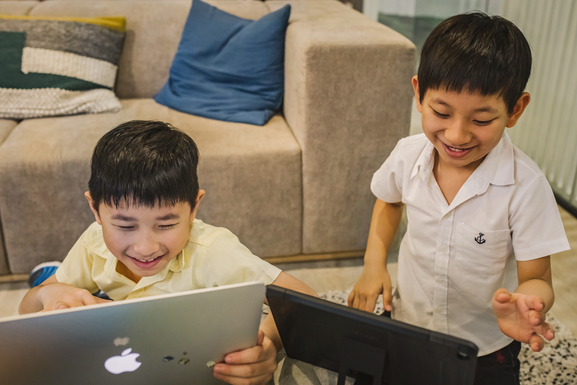While everyone agrees that children need to learn, getting them excited to learn is no easy feat. Luckily, in the digital age, with innovative online teaching solutions and tools, such as KooBits, there are numerous ways to engage students by making learning fun.
Studies have shown that peer-to-peer based online learning is fun for students, especially when it comes in the form of digital game-based learning.
Let us see how:
It keeps students engaged
Peer-to-peer based online learning that is game-based can help students remain engaged throughout the lessons. Engagement means that students are actively involved, something which includes participation in addition to just paying attention. Engagement is a classic sign that students are having fun.
A literature review by Katrina Serrano in 2019 confirmed that digital game-based learning increases student engagement. This was confirmed via surveys in the studies reviewed. One specific study cited, by Khan et al. in 2017, found that students who participated in digital game-based learning were not only more involved but also had more fun.
One important note is that while game-based online learning with peers is fun and promotes engagement, this depends on the type of the game in question. While any game with rewards is likely to provide a fun and engaging learning experience in the short term, it needs collaboration, feedback, and choice in the long run.

It produces positive results
The research into game-based peer-to-peer online learning confirms that not only do students have fun but that they also learn.
The same literature review by Serrano also found that students had greater achievement when they learned via digital games. This applied to research into science achievement, maths achievement, and vocabulary learning.
A 2013 study by Boeker et al. found that students who participated in game-based e-learning scored better in a test on cognitive knowledge compared to students who relied on typical script-based learning. Interestingly, this particular test looked at university students studying medicine. That shows that this increase in retention from “fun” learning methods continues well past childhood.
Reasons why peer-to-peer learning is fun
Educators and those who have designed online learning programs have found that this type of peer-to-peer learning that incorporates elements of a game is fun for students in multiple ways.
Rewards
Any game-based learning that incorporates rewards will always be fun for students. They will find themselves motivated to work hard to earn those rewards.
For example, with KooBits app, students are eager to learn and indulge in a healthy competition with their peers to stay at the top of the leader boards.
Collaboration
For the fun and engagement to last, the learning must include collaboration and interactions with other students. Students can help each other with tasks and learning, assist with explaining concepts, and provide competition to keep each other motivated.
The important takeaway is that online learning cannot strip away the interactions between people, including between students as peers and between teachers and students. Even during peer-to-peer online learning, teachers can provide feedback to students and answer questions.
Students can also be encouraged to help each other and work together. There is no reason to get rid of group work just because the revision is done online.
Yet another benefit of how many of the peer-to-peer based online learning experiences involve students helping each other comes from the teaching that these students do, even informally. When a student teaches another student something, they get a chance to reinforce their own learning. They also get an element of fun, as this gives students the chance to see themselves in leadership roles.
******
There is a constant quest to keep learning fun, as, without fun, students are unlikely to remain motivated and engaged. Peer-to-peer based online learning is set up in a way that is fun, giving students the chance to show off their skills and “play teacher” while reinforcing their own knowledge.
Research shows that for even better results, that peer-to-peer based online learning should be game-based. Without collaboration, students’ fun begins to dissipate much more quickly, even with engaging game-based learning. When collaboration is included, however, that motivation and fun last much longer.